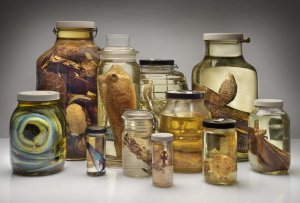Fun Times Running About Museums
I met a traveller from an antique land
Who said: “Two vast and trunkless legs of stone
Stand in the desert. Near them on the sand,
Half sunk, a shattered visage lies, whose frown
And wrinkled lip and sneer of cold command
Tell that its sculptor well those passions read
Which yet survive, stamped on these lifeless things,
The hand that mock’d them and the heart that fed;
And on the pedestal these words appear:
‘My name is Ozymandias, king of kings:
Look on my works, ye Mighty, and despair!’
Nothing beside remains. Round the decay
Of that colossal wreck, boundless and bare,
The lone and level sands stretch far away;”
As a child, our mother always encouraged us from a young age to enjoy museums.
We would regularly visit three specific museums because of their locality.
The Bethnal Green Toy Museum (now the V&A Museum of Childhood) and The Horniman and The Geoffrey Museum (now called the Museum of the Home) were each nearby relatives of ours.
Unsurprisingly the Toy museum was a favourite of mine. My sister and I were often left in the museum whilst our mum and nan visited the Roman Road market or Aunty Vi’s, our grandmother’s cousin.
Of course, these days, the notion of leaving kids alone, with no money and no telephone for hours on end in a museum in London would be considered neglect, but to us, it was just magical.
It was full of puppets, doll houses, a beautiful miniature carousel, robots, rocking horses and toy soldiers.
Even though the museum was far less interactive than today, it was a feast for imagination but familiar. It was a palace dedicated to something I specialised in at the time; playing.
By contrast, the Hornimans Natural History section was a great favourite of mine because it showed me so much of the world. These days I might compare it to Quex in Broadstairs.
As a child, it was full of things from far-flung places, each a window to the wider world.
Frederick Horniman was a Victorian tea trader and avid collector of art and artefacts, objects and specimens from across the world. In 1901 he donated his collection and the museum that housed it to the London County Council “for the instruction and enjoyment” of Londoners, on the condition entry should always be free.
When mum and nan visited our Aunty Zoe, we were occasionally deposited at the Horniman.
It was full of masks, totem poles, bows and arrows, bongo drums and my favourite, a Natural History gallery.
The centrepiece of the gallery is an overstuffed Canadian walrus. Walrus are huge by definition, but the specimen in the South East London museum is incredibly massive; an error made by English taxidermists whose task it was to mount an animal they had no notion what it looked like. Its elephantine wrinkly skin was stuffed taught to the point of bursting, like a seal—an understandable, if ignorant, mistake. The high plinth accentuates the size it is sat upon. It forced, or at least it forced me; a child, to look up at the walrus, which seemed like its head was three or four meters off the ground.
The walrus is less famous than Dippy* from the London Natural History Museum. But it symbolises the Horniman and continues to be well-loved by all who see it.
As well as the walrus, the Natural History part of the Horniman had lots of specimen jars with things of interest to gawp at. Often, art students would sit and sketch the somewhat strange things suspended and contorted in their formaldehyde jars of varying sizes.
For my part, the walrus was most impressive, but the top place of remarkable animal remains is still held by what I’d seen in the great hall of the Natural History Museum in London. An enormous brown boned skeleton of a real-life Diplodocus. I used to love it!
Some time ago, the NHM Dippy started to tour the UK, spending time in a host of Museums and galleries the length and breadth of the country. That tour continues even today.
I will write more about the NHM at a later date.
It was only today that I learned Dippy is a reproduction of the real dinosaur skeleton kept in the USA. Nevertheless, not knowing that it was not real, I imagined it roaming about eating leaves out of reach to even giraffes.
NOTE: Dippy the dinosaur is a life-size, plaster-of-Paris replica of a Diplodocus carnegii skeleton. It was gifted to the Natural History Museum by Andrew Carnegie and was unveiled for the first time on 12 May 1905. The original skeleton is housed at the Carnegie Museum of Natural History in Pittsburgh, USA. Carnegii is a reference to Andrew Carnegie, who funded the excavation of the original specimen and presented the replica as a gift to King Edward VI.
About Rev Lloyd Hobbard-Mitchell
Rev. Lloyd Hobbard-Mitchell, an Englishman deeply connected to Thailand, was ordained to the Sacred Priesthood on 28th May 2023.
In addition to his religious journey, he has worked as an online English teacher and pursued a career as an artist. He has also operated a tour desk business with his wife within international brand hotels.
Lloyd has extensive experience in the voluntary sector, specifically in addressing homelessness and social welfare.
He is a Fellow of the Royal Geographical Society and embraces opportunities to meet new people, see new places, explore cultural similarities, and celebrate differences.




